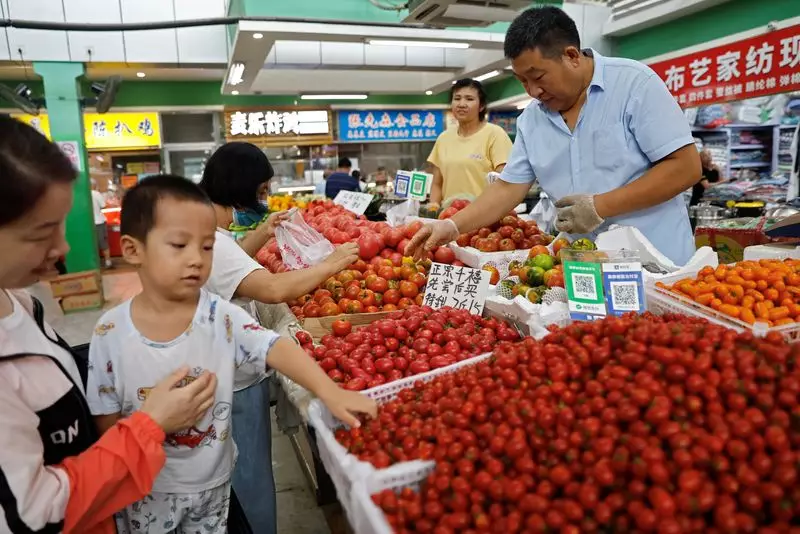China’s consumer inflation remained unchanged in May, indicating the ongoing struggles with feeble domestic demand. Despite various support measures, consumer prices have failed to surge, mainly due to low confidence stemming from the prolonged property sector crisis. The Consumer Price Index (CPI) edged up by 0.3% year-on-year in May, matching the previous month’s increase. However, the month-on-month CPI showed a decline of 0.1%, pointing towards lingering deflationary pressures.
On the other hand, producer prices in China showed some improvement as the decline eased in May. After experiencing deflation since September 2022, producer prices contracted at a slower pace of 1.4% compared to a 2.5% decrease in April. This slight improvement was driven by commodity prices such as copper and gold, rather than reflecting a boost in China’s domestic demand.
Following the release of this data, Asian shares remained subdued and China’s blue chips witnessed a decline in early trading. Investors are closely monitoring whether China’s Producer Price Index (PPI) inflation could turn positive in the second half of the year, especially with the recent uptick in commodity prices, particularly copper.
Despite the lifting of stringent COVID restrictions in late 2022, China’s economy continues to face challenges linked to the prolonged property sector crisis, which has had a significant impact on investor, business, and consumer confidence. In response, Beijing has implemented various measures to stimulate demand in the housing sector and enhance consumer sentiment. Additionally, the government has introduced incentives to drive trade-ins of automobiles and other consumer goods, alongside plans to create more jobs and promote domestic demand among the youth population.
With the core inflation measure standing at 0.6% year-on-year in May, down from 0.7% in April, there is growing concern about the fragility of domestic demand. Many economists anticipate that Beijing will announce additional support measures in the coming months to steer the economy towards achieving a GDP growth target of “around” 5% for the year. A more comprehensive and proactive policy stance encompassing fiscal, monetary, and property sector initiatives may be necessary to effectively boost domestic demand and ensure a sustainable economic recovery.
China’s economic recovery is facing hurdles due to weak domestic demand and lingering deflationary pressures. While some improvements were observed in producer prices, more substantial measures will be required to bolster consumer confidence and drive sustainable growth in the second half of the year.

